Related Research Articles
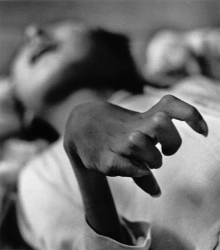
Minamata disease is a neurological disease caused by severe mercury poisoning. Signs and symptoms include ataxia, numbness in the hands and feet, general muscle weakness, loss of peripheral vision, and damage to hearing and speech. In extreme cases, insanity, paralysis, coma, and death follow within weeks of the onset of symptoms. A congenital form of the disease affects fetuses in the womb, causing microcephaly, extensive cerebral damage, and symptoms similar to those seen in cerebral palsy.

Minamata is a city located in Kumamoto Prefecture, Japan. It is on the west coast of Kyūshū and faces Amakusa islands. Minamata was established as a village in 1889, re-designated as a town in 1912 and grew into a city in 1949. As of March 2017, the city has an estimated population of 25,310 and a population density of 160 persons per km². The total area is 162.88 km².

Methylmercury (sometimes methyl mercury) is an organometallic cation with the formula [CH3Hg]+. It is the simplest organomercury compound. Methylmercury is extremely toxic, and its derivatives are the major source of organic mercury for humans. It is a bioaccumulative environmental toxicant.
Environmental pollution in Japan has accompanied industrialization since the Meiji period. One of the earliest cases was the copper poisoning caused by drainage from the Ashio Copper Mine in Tochigi Prefecture, beginning as early as 1878. Repeated floods occurred in the Watarase River basin, and 1,600 hectares of farmland and towns and villages in Tochigi and Gunma prefectures were damaged by the floodwater, which contained excessive inorganic copper compounds from the Ashio mine. The local breeders led by Shōzō Tanaka, a member of the Lower House from Tochigi appealed to the prefecture and the government to call a halt to the mining operations. Although the mining company paid compensatory money and the government engaged in the embankment works of the Watarase River, no fundamental solution of the problem was achieved.
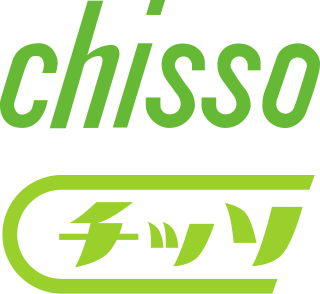
The Chisso Corporation, since 2012 reorganized as JNC, is a Japanese chemical company. It is an important supplier of liquid crystal used for LCDs, but is best known for its role in the 34-year-long pollution of the water supply in Minamata, Japan that led to thousands of deaths and victims of disease.
The four big pollution diseases of Japan were a group of man-made diseases all caused by environmental pollution due to improper handling of industrial wastes by Japanese corporations. The first occurred in 1912, and the other three occurred in the 1950s and 1960s.

In the United States, the Mercury-Containing and Rechargeable Battery Management Act was signed into law on May 13, 1996. The purpose of the law was to phase out the use of mercury in batteries and to provide for the efficient and cost-effective collection and recycling, or proper disposal, of used nickel cadmium batteries, small sealed lead-acid batteries, and certain other batteries.

Minamata Bay is a bay in the small factory town of Minamata on the west coast of Kyūshū island, located in Kumamoto Prefecture, Japan. The bay is part of the larger Shiranui Sea which is sandwiched between the coast of the Kyūshū mainland and the off-lying islands of Kumamoto and Nagasaki prefectures.
Niigata Minamata disease is a neurological syndrome caused by severe mercury poisoning. Identical in symptoms to the original outbreak of Minamata disease in Kumamoto Prefecture, the second outbreak in Niigata Prefecture was confirmed with the same name in 1965. The disease was caused by severe mercury poisoning, the source of which was methylmercury released in the wastewater from mercury sulfate-catalysed acetaldehyde production at the Showa Electrical Company's chemical plant in Kanose village. This highly toxic compound was released untreated into the Agano River where it bioaccumulated up the food chain, contaminating fish which when eaten by local people caused symptoms including ataxia, numbness in the hands and feet, general muscle weakness, narrowing of the field of vision and damage to hearing and speech.
Ontario Minamata disease is a neurological syndrome caused by severe mercury poisoning. It occurred in the Canadian province of Ontario, in 1970, and severely affected two First Nation communities in Northwestern Ontario following consumption of local fish contaminated with mercury, and one First Nation in Southern Ontario due to illegal disposal of industrial chemical waste. The disease was named after the infamous case of severe mercury poisoning in the fishing community of Minamata, Japan, which became known as Minamata disease because it devastated only the residents of the community.
Masazumi Harada was a Japanese doctor and medical researcher. His most famous work covered the effects of Minamata disease, a type of severe mercury poisoning that occurred in the city of Minamata, Kumamoto Prefecture during the 1950s and 1960s. His publications included Minamata disease (1972) and Minamata Ga Utsusu Sekai (1989). He died June 11, 2012, of acute myelocytic leukemia at his home in Kumamoto.
The Minamata disease compensation agreements of 1959 were agreed between the polluting Chisso company and representative groups of fishermen and Minamata disease patients who had been affected by mercury pollution. The agreements and their formation shared a number of common characteristics. They were formulated outside the legal system, by ad-hoc mediation committees specially established for the purpose. Members of the committees and the final agreements were weighted in favour of Chisso and all included punitive clauses that the groups could make no future claims for compensation against the company.

Metal toxicity or metal poisoning is the toxic effect of certain metals in certain forms and doses on life. Some metals are toxic when they form poisonous soluble compounds. Certain metals have no biological role, i.e. are not essential minerals, or are toxic when in a certain form. In the case of lead, any measurable amount may have negative health effects. It is often thought that only heavy metals can be toxic, but lighter metals such as beryllium and lithium may also be in certain circumstances. Not all heavy metals are particularly toxic, and some are essential, such as iron. The definition may also include trace elements when abnormally high doses may be toxic. An option for treatment of metal poisoning may be chelation therapy, a technique involving the administration of chelation agents to remove metals from the body.

The presence of mercury in fish is a health concern for people who eat them, especially for women who are or may become pregnant, nursing mothers, and young children. Fish and shellfish concentrate mercury in their bodies, often in the form of methylmercury, a highly toxic organomercury compound. This element is known to bioaccumulate in humans, so bioaccumulation in seafood carries over into human populations, where it can result in mercury poisoning. Mercury is dangerous to both natural ecosystems and humans because it is a metal known to be highly toxic, especially due to its neurotoxic ability to damage the central nervous system.
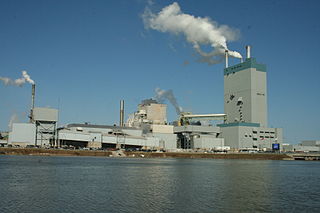
The Dryden pulp mill, also known as the Reed Mill, is a paper and pulp mill in Dryden, Ontario. During the 1960s and 70s, mercury poisoning from the mill caused one of Canada's worst environmental disasters: Dryden Chemicals Ltd dumped mercury into the English-Wabigoon River, upstream of Grassy Narrows First Nation, poisoning the fish which were their staple food. Members of the Grassy Narrows and the Whitedog communities downstream from the mill suffered severe mercury poisoning.

The Minamata Convention on Mercury is an international treaty designed to protect human health and the environment from anthropogenic emissions and releases of mercury and mercury compounds. The convention was a result of three years of meeting and negotiating, after which the text of the convention was approved by delegates representing close to 140 countries on 19 January 2013 in Geneva and adopted and signed later that year on 10 October 2013 at a diplomatic conference held in Kumamoto, Japan. The convention is named after the Japanese city Minamata. This naming is of symbolic importance as the city went through a devastating incident of mercury poisoning. It is expected that over the next few decades, this international agreement will enhance the reduction of mercury pollution from the targeted activities responsible for the major release of mercury to the immediate environment.
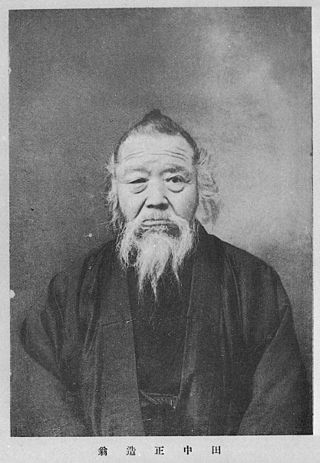
Shōzō Tanaka was a Japanese politician and social activist, and is considered to be Japan's first conservationist. Tanaka was politically active in the Meiji Restoration and leader in the Freedom and Popular Rights Movement. In Japan's first general election of 1890, he was elected to the House of Representatives as a member of the Rikken Kaishintō, a liberal political party. He is most well known for his advocacy of rural residents around the Watarase River whose health and livelihoods were negatively effected by pollution from the Ashio Copper Mine in the 1880s. Tanaka also contributed to philosophical thought on nature in the early Meiji era.
Timothy S. George is a Professor of History and Chair of the University of Rhode Island Department of History. He specializes in Postwar Japanese history, Citizen-corporation-state relations in Japan from Meiji through Shōwa, local history, and environmental history. A Fulbright Scholar, George's research has been reviewed in Environmental History, The Journal of Asian Studies, Social Science Japan Journal, and the Journal of Japanese Studies. He is a faculty affiliate of Harvard University's Program on U.S.-Japan Relations.
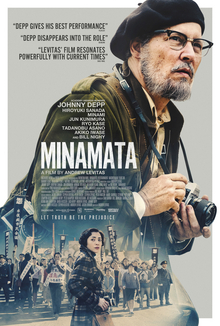
Minamata is a 2020 biographical drama film directed by Andrew Levitas, based on the book of the same name by Aileen Mioko Smith and W. Eugene Smith. The film stars Johnny Depp as W. Eugene Smith, an American photographer who documented the effects of mercury poisoning on the citizens of Minamata, Kumamoto, Japan. The film premiered at the Berlin International Film Festival on February 21, 2020. It was released in the United States on February 11, 2022, by Samuel Goldwyn Films. At the 94th Academy Awards in 2022, the film ranked third place in the Oscars Fan Favorite contest.

Mercury contamination in Grassy Narrows was an uncontrolled discharge of between 9,000 kilograms (20,000 lb) and 11,000 kilograms (24,000 lb) of mercury from the Dryden Mill's chloralkali plant in Dryden into the headwaters of the Wabigoon River in the Kenora District of Northwestern Ontario from 1962 until 1970. It was described as "one of the worst cases of environmental poisoning in Canadian history." The contamination poisoned many people in the Grassy Narrows First Nation and Whitedog First Nation communities
References
This article includes a list of references, related reading, or external links, but its sources remain unclear because it lacks inline citations .(November 2016) |
- "Minamata Disease: The History and Measures", The Ministry of the Environment, (2002), retrieved 17 January 2007
- "Minamata Disease Archives" Archived 2016-03-03 at the Wayback Machine by the National Institute for Minamata Disease, retrieved 29 October 2006
- Harada, Masazumi. (1972). Minamata Disease. Kumamoto Nichinichi Shinbun Centre & Information Center/Iwanami Shoten Publishers. ISBN 4-87755-171-9 C3036
- George, S. Timothy. (2001). Minamata: Pollution and the Struggle for Democracy in Postwar Japan. Harvard University Press. ISBN 0-674-00785-9
- Ui, Jun. (1992). Industrial Pollution in Japan . United Nations University Press. ISBN 92-808-0548-7. Chapter 4, section IV
- Smith, W. E. and Smith, A. M. (1975). Minamata. Chatto & Windus, Ltd. (London), ISBN 0-7011-2131-9